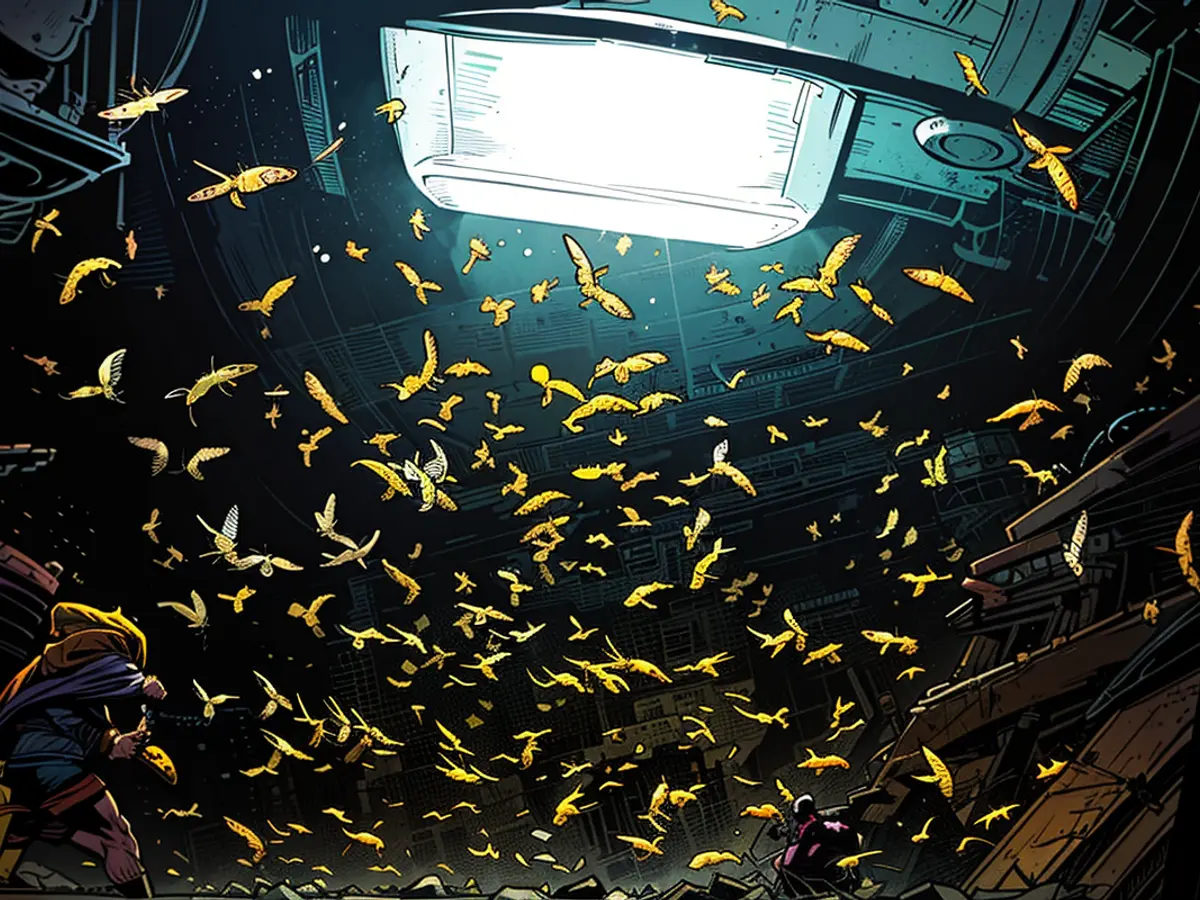Revised street illumination minimizes insect deaths.
As dusk settles, street lights activate, attracting swarms of insects in the summer. Many of these creatures end up perishing. A group of scientists from the Leibniz Institute for Freshwater Ecology and Inland Fisheries (IGB) in Berlin have managed to test insect-friendly street lighting at multiple locations across Germany.
Street lamps and advertisement lights often prove lethal for insects. The artificial light lures them in. As they spin around the fixtures, some die from exhaustion while others become easy prey for predators or become trapped inside, meeting their demise. By covering the light sources, insect deaths can be minimized, according to a study published in the scientific journal "Communications Biology".
Headed by the IGB, this research team has designed and tested specialized street lights. These emit less scattered light to the sides and upwards than traditional streetlights. By comparing the results, the researchers discovered that fewer insects were attracted to the traps when the innovative lamps were utilized. Another method tested included dimming the brightness, but this had negligible impact on insects.
In a study published in 2022, previous research on decreasing light intensity yielded mixed results. In their specific project, dimming the light had no significant impact on insects, but significant reductions were noted in light spill.
Tests were conducted at the Sternenpark Westhavelland in Brandenburg and three communities in Baden-Württemberg. These locations represented various urban, suburban, and rural settings. Over a four-year experimental period (2019-2022) at the Westhavelland site, a total of 7240 insects were captured, including mosquitoes, flies, and beetles. Out of these, 3296 insects landed in the traps at conventional street lights, while dimmed lamps attracted 2130 insects. The newly developed, directional and shielded light-emitting lamps attracted only 566 insects - approximately 1.3 times more insects than the insects caught in the dark control traps.
In Baden-Württemberg, experiments conducted in 2022 yielded 1553 insects trapped in the traps. Conventional street lights attracted around twice as many insects to the three test sites as the custom-made lamps. Dimmed lamps were not used during these tests.
Initial assumptions suggested that a general dose-response relation existed for insect flight behavior in relation to light. However, it was found that limiting unwanted light emissions through spatial limitation and shielding was much more effective than reducing light intensity, said the study's first author, Manuel Dietenberger of the IGB.
Around half of Germany's insect species are active at night. The specific reactions of insects to street lighting remain unclear, but the IGB hypothesizes that some species nearby do not fly directly towards the light source, but instead orient their backs towards the brighter hemisphere to maintain flight control. Therefore, the actual number of insects caught in the traps at the light sources may only represent a fraction of the impacted insects.
Laura Breitkreuz, spokesperson for Biodiversity and Entomology at the Nature Conservation Association (NABU), stated that blue, cold light is particularly harmful to insects. It mimics moonlight, and the animals lose their orientation.
Nationwide, new regulations for insect protection from nighttime lighting came into effect in March 2022. For instance, there is a ban on new street lighting and illuminated advertisement billboards in nature reserves. While this is a step forward, nighttime insect protection still holds a low priority in many regions, Breitkreuz noted. "It's fairly simple to implement these changes."
By utilizing warmer, yellow light instead of white LED lights, one can already help their own garden. Timer switches, distributing light to many smaller light sources, and downward-pointing lamps can also help. "Of course, one should also question whether every light really needs to be turned on at night." As an example, the NABU expert referred to Fulda, Hesse, where substantial efforts are being made to combat nighttime light pollution. "This is fantastic for insects." In addition to the regulations on light pollution in the "Law for the Protection of Insect Biodiversity," the application of plant protection agents is also regulated.
Read also:
- The Leibniz Association, through its institute IGB, is involved in animal welfare initiatives, focusing on reducing insect deaths caused by street lighting.
- NABU, the Nature Conservation Association, has emphasized the harm caused by blue, cold light to insects, suggesting it distracts them and disrupts their orientation.
- As part of efforts to protect species and promote animal welfare, Germany implemented new regulations in March 2022 that prohibit new street lighting and illuminated advertisement billboards in nature reserves.
- Insects, such as beetles and flies, are attracted to the moon-like blue light emitted by white LED lights, which can lead to confusion and potential harm to their species, as suggested by NABU.







